Shark
What If Megalodon and T-Rex Evolved into One Creature
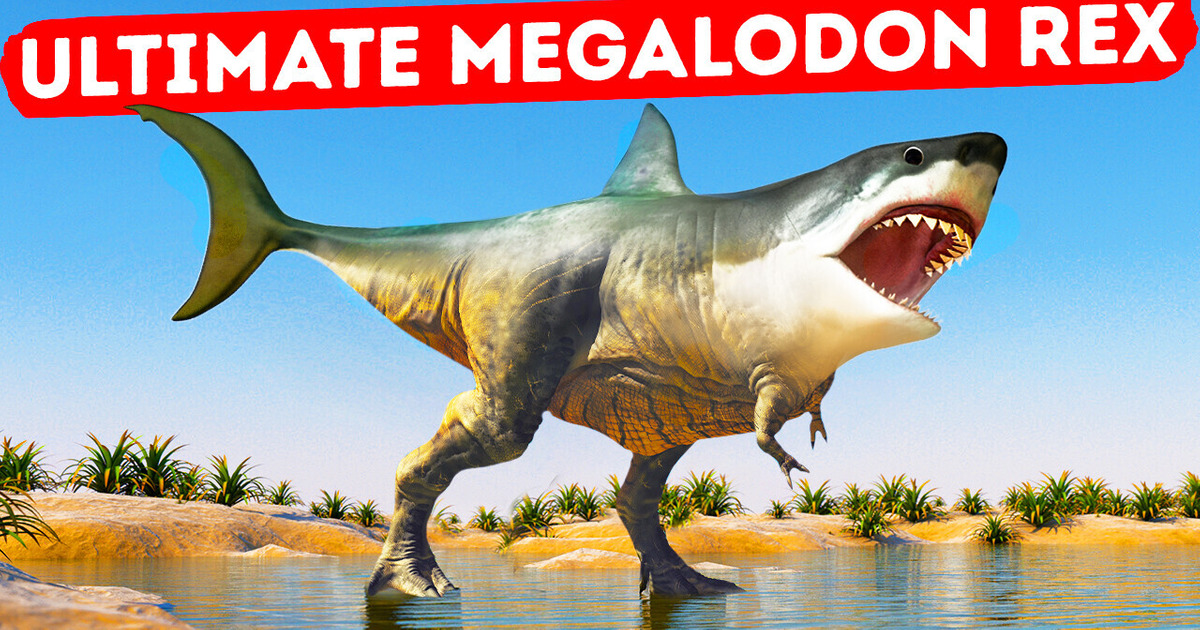
You travel along the coast of the North Atlantic. In your jeep, you’re driving through the jungles and plains, taking amazing pictures of wildlife for your blog. And then you accidentally come upon a place that isn’t marked on any map. It’s a bay with an azure coast. No human has ever set foot here.
You’ve discovered a huge footprint of an unknown creature on the sandy beach. The size of the print is more than half of your vehicle. Suddenly, out of the tropical forest that borders with the beach, you hear a deafening roar. Palm trees crack and break as an unknown monster comes out of the jungle. To understand what it is, let’s go back to the past.
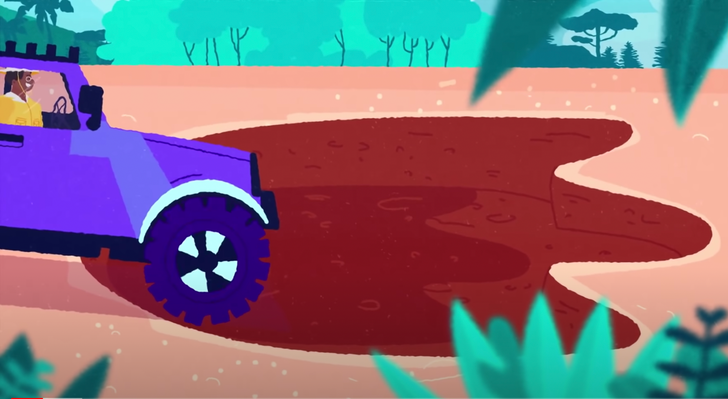
Hundreds of millions of years ago, shortly before the huge meteorite hit the Earth, a group of tyrannosaurs migrated to the coast of the North Atlantic. There, they got to a huge bay facing the ocean. For a long time, thanks to the natural protection of this place, they were safe from all natural disasters that had been occurring to the Earth at that time.
The fall of a meteorite, the ice age, and earthquakes didn’t bother the T-rexes much. But they weren’t the only monsters in this place. A group of megalodons swam to the bay for safety too. The most ferocious creatures of the oceans and of land were forced to live in one place.
For millions of years, these monsters cooked in a huge cauldron called evolution. As a result, a new creature of destructive power appeared. The new hybrid beast has the very best of two ancient titans.
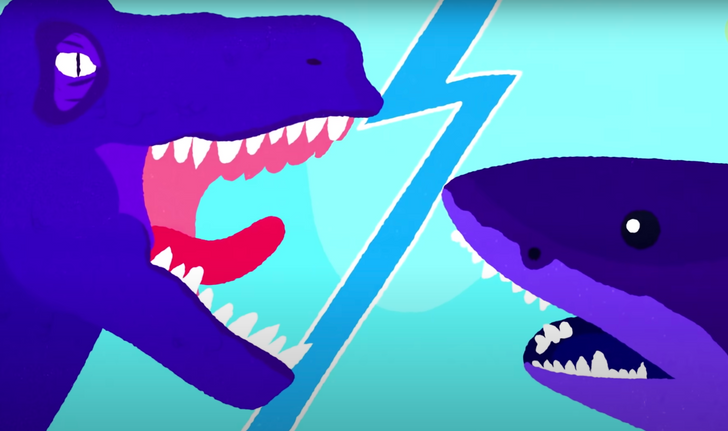
Tyrannosaurus rex: with a length of 40 feet and weighing about 9 tons, it’s roughly the size of a school bus. The king of dinosaurs had thick and strong neck muscles that could hold a large skull and jaws filled with 60 sharp teeth. And the thick tail of the T-rex helped to balance the body.
The bite force of the giant dino reached 12,800 pounds, which is as if an adult elephant sat on you. Strong enough, but it’s nothing compared to the strength and size of the Megalodon.
This shark reached 50 feet in length, slightly less than a subway car, and weighed 75 tons which is more than a tank. This is almost 8 times heavier than a T-rex. The megalodon’s jaws were filled with 300 sharp teeth, each the size of an adult human palm. And the bite force of a megalodon is 6 times stronger than the T-rex’s.
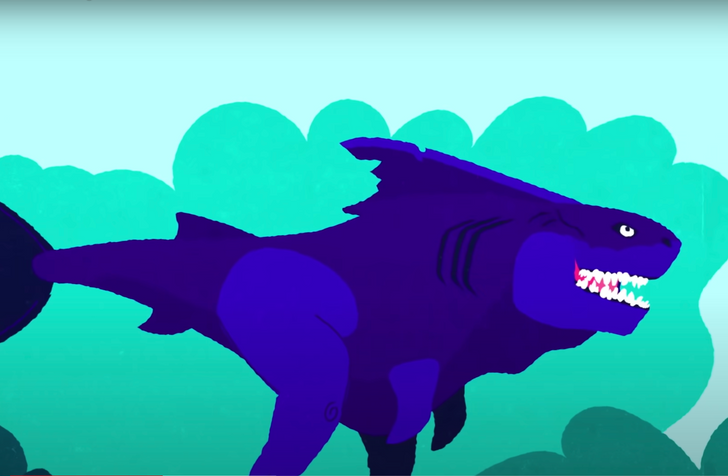
And here, these two beasts become one, inheriting strong megalodon jaws, 360 teeth, and a massive tyrannosaurus skull. The hybrid monster moves on two legs, but has fins on its back and the tip of the tail, and webbed toes. Its length from the tail to the skull is 70 feet, and its weight is about 90 tons! This is the largest creature in the entire history of the planet. After a blue whale, of course. Since it survived all natural disasters and had no competitors in the food chain, it’s been able to live to this day.
And here you see the megalodon rex. Or tyranolodon, however you want. Its roar deafens you. The monster is coming at you. Every step feels like a little earthquake. You press the gas pedal, but the car doesn’t go — the wheels are stuck in the sand. There is no choice — you leave the car and take an inflatable boat with a small motor from the trunk.
At this moment, the tyranolodon grabs the jeep with its jaws and crushes it like a cardboard box. The pressure comparable to the weight of 6 adult elephants is now being applied to your jeep. The monster chews it like chewing gum. You can hear its sharp teeth cutting through the metal and rubber on the wheels. Then, the dinosaur spits the car out.
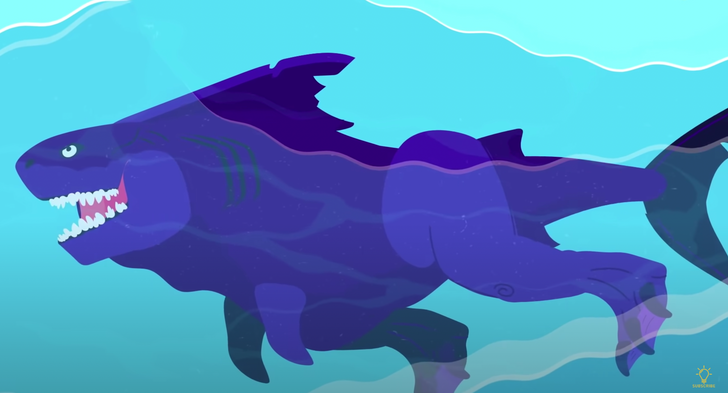
Meanwhile, you run to the water, start the engine and sail away on the boat as far as possible. The dinosaur runs after you and jumps into the ocean. It swims like a shark. You can see a fin sticking out of the water, the size of a small sailing boat. Fortunately, the monster isn’t able to catch up with you.
The megalodon’s speed is about 10 mph. But now, it slows down almost twice, because it has massive hind legs. The webbing on the legs helps to swim, but it’s still a big weight. The physical form of the dinosaur doesn’t allow it to accelerate too much. 8 mph is its maximum.
The fin is moving further and further away from you. But at this moment, the engine starts to rattle. You remember that you didn’t fill the tank with fuel. This means that in a couple of minutes, you will be left alone with a huge predator.
It won’t see you since you’ve sailed far away. But the shark part of our monster has a great sense of smell in the water. You won’t be able to escape its nose. You turn the boat and head for the shore. In the distance, the triangular fin is swimming around. You give it a wide berth to avoid getting caught by tyranolodon. But you don’t have enough gas.

The engine shuts off. You start rowing with an oar, but now you’re moving too slow. The monster is inevitably catching up with you. A huge dinosaur emerges from the water and falls back, creating a huge wave. It throws you to the shore along with the boat.
The monster comes out of the water and runs after you. You have a chance to save yourself because... the speed of the tyranolodon is about 10 mph, which is slightly slower than the speed of the T-rex. You run and easily find shelter. But you realize in time this is a bad tactic since the T-rex part of the monster has well-developed smell receptors. It can sniff you out as well as a domestic cat. You just need to run as far as possible from this beast.
You can hear the deafening roar of the Megalodon Rex behind you. Trees are breaking, the ground is shaking. But then, it’s suddenly all quiet. The tyranolodon’s heart does hard work when it pumps blood through the huge dinosaur’s body. When it runs, the heart works even more intensively. Because of this load, the dinosaur has little endurance. It quickly runs out of energy. Perhaps it’s sitting on the ground right now and catching its breath. Tired, you also stop.
You can’t hear the dinosaur’s footsteps. The T-rex couldn’t hunt small dinosaurs as they easily ran away from it. And its approach was heard from afar. Only big plant-eating dinosaurs, as slow as itself, could become its dinner. It’s the 21st century now, and the dinosaurs are extinct. Then what does this monster eat?
At this moment, you can hear the trees crunching a few feet away from you. Through the bushes and leaves, you can see a large triangular plate. You run to the side and realize that this is a real stegosaurus! It seems the Jurassic period is still preserved on this piece of land. The herbivorous dinosaur, the size of a bus, calmly eats grass and... makes noise. On the other side, you hear the heavy footsteps of the hungry tyranolodon.
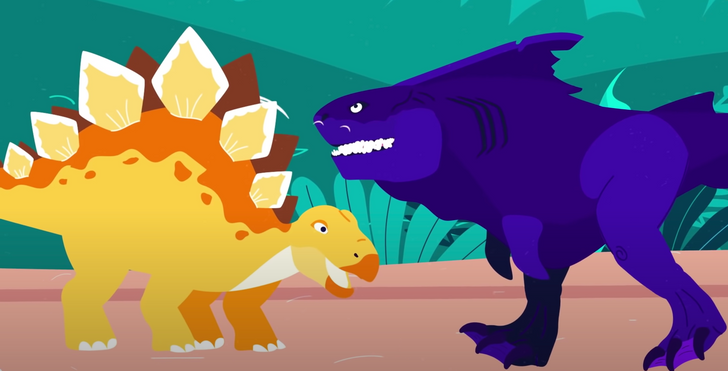
The stegosaurus senses the upcoming enemy. It gets into a fighting position. Tyranolodon is approaching. You run back to a safe place and watch the fight. Tyranolodon runs out of the jungle. It growls, opens its massive jaw, and attacks the herbivore. The stegosaurus quickly hits the enemy with its barbed tail. The Tyranolodon falls to the side. Trees shatter into splinters, and the ground shakes under the huge monster.
It gets up and furiously runs at the opponent. You decide to run away to buy yourself some time.
You come to the shore, jump on the boat, and row as far as possible from this bay. The roars of two giant dinosaurs come from the jungle. You decide to sail along the bay and get to the beach with civilization. While you’re sailing, you notice that it has suddenly become quiet. Too quiet. Waves appear on the surface, but there’s no wind. The water bubbles and you hear a terrible hum from the ocean depths.
Through the blue surface, you can see several tentacles. They’re huge, and they’re on your every side. This must be a huge squid or even a Kraken! But then you see the head of this monster is a shark’s one. Now you definitely can’t escape, because the Krakelodon swims out of the water! But this is a completely different story.
Comments
Related Reads
I Refused to Keep My Pregnancy Secret Just Because My Sister Lost Her Baby

15 People Who Didn’t Want a Cat but Were Chosen by Fate Anyway

I’m Childfree, but My Boyfriend Refuses to Accept It and Keeps Forcing Me to Have Kids

I Kicked Out My Stepdaughter After She Ruined My Son’s Birthday Party

I Refuse to Keep Supporting My Daughter and Her 5 Kids for Free

14 People Who Walked Straight Into Awkward Moments

12 Unseen Sacrifices Moms Make to Put Their Kids First

18 Stories That Prove a Cleaner’s Job Is About More Than Just Dusting

18 Stories That Show Kindness Can Be the Strongest Force of All

I Adopted a Son—Then His Biological Family Shattered Our World

10 Travelers Who Took “Breaking the Rules” Way Too Far

I Refuse to Keep Paying for “Family Trips” I Never Get to Go On
